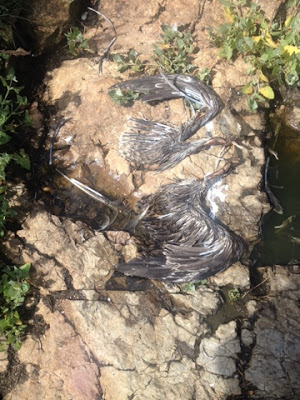So what better time to offer a brief summary of the year. On the good side, the two sites at Trewavas Head fared pretty well, holding over 120 pairs of birds. This compares to around 70 in previous years so was a welcome increase. Some of these birds may have relocated from Rinsey though, where numbers were again very low (more on that later). Records of colour-ringed birds give us a little bit of insight into these movements and this year we saw six birds at Trewavas that had been recorded previously at Rinsey. Two of these were actually ringed as chicks in France (in 2007 and 2008), giving yet more insight into how these birds move around.
 |
| Part of the colony at Trewavas Head |
Other French-ringed birds at Trewavas included birds ringed as chicks in 2002 and 2005. We also recorded 16 birds ringed at Trewavas in previous years, including a bird also photographed at sea in 2014 (see pics here), and also a bird originally ringed on the Isles of Scilly in 1996, caught and colour-ringed here in 2015.
At Rinsey, the only colour-ringed birds seen were a French bird ringed as a chick in 2005 and seen quite regularly and a lone bird ringed by us in 2013, which visited just once in February 2016. Breeding at Rinsey was also a write-off, with just nine pairs attempting to nest but all failing before the end of the season.
So a season of good and bad across the sites, but with some interesting stories building...













